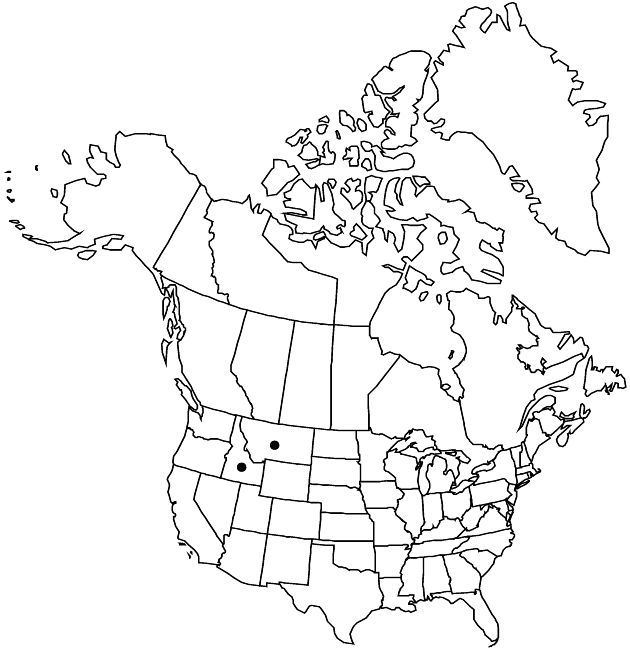Erigeron evermannii
Fl. Rocky Mts., 903, 1067. 1917.
Perennials, 2–10 cm; taprooted, caudices multicipital or branches relatively long and thick to relatively slender, lignescent. Stems erect to ascending, glabrous or sparsely strigose, sometimes sparsely villosulous distally, eglandular. Leaves basal, sometimes few cauline; blades oblanceolate to spatulate (usually folding), 10–40 × 2–7 mm, cauline bractlike or 0, margins entire, faces glabrous or glabrate, eglandular. Heads 1. Involucres 5–8 × 7–13 mm. Phyllaries in 2–3 series (commonly purplish), sparsely to moderately hirsuto-villous, sometimes sparsely minutely glandular. Ray-florets 15–40; corollas white, 6–10 mm, laminae not coiling or reflexing, straight. Disc corollas 3.6–4.5 mm. Cypselae 3.2–3.5 mm, 2-nerved, faces sparsely strigose; pappi: outer of setae, inner of 25–35 (stramineous, dull) bristles.
Phenology: Flowering Jul–Aug.
Habitat: Alpine slopes, ridges, outcrops, talus, gravelly slopes, often with whitebark pine
Elevation: 2400–3500 m
Discussion
Erigeron evermannii is superficially similar to E. leiomerus and is sometimes misidentified as such; the latter has wider, more numerous, and merely glandular phyllaries, reflexing rays, non-folding leaves, and leafier stems.
Selected References
None.
Lower Taxa
"thick" is not a number.
